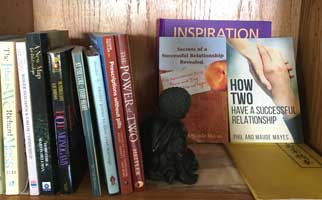Successful Relationship Reading Corner
 This week we wrote about how our perception of a situation is based on the past more than the present, and how we can get past that by reframing. Here are some excellent articles to help you reframe your relationship and your life. This week we wrote about how our perception of a situation is based on the past more than the present, and how we can get past that by reframing. Here are some excellent articles to help you reframe your relationship and your life.
Reframing Your Marital Problem "I don’t care what kind of couples therapy you do, you will be eventually be invited by your therapist to start reframing your marital problem. Why is reframing your marital problem such a fundamental part of couples therapy? Because how you see your problem is directly related to how stuck you are in it."
Cognitive reframing – it’s not about what happens to you, but how you frame it "All situations that happen to you in life have no inherent meaning. You are the one who signs a meaning, seeing a situation through a certain frame. With cognitive reframing, you can change the way you look at something and consequently change how you experience it."
Visual Perception Theory A very clear description of two theories of perception and where the 90% figure come from. "In order to receive information from the environment we are equipped with sense organs e.g. eye, ear, nose. Each sense organ is part of a sensory system which receives sensory inputs and transmits sensory information to the brain. A particular problem for psychologists is to explain the process by which the physical energy received by sense organs forms the basis of perceptual experience."
|
|